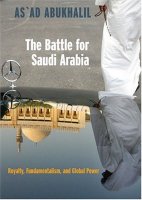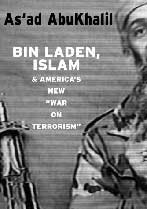From the diligent Bahrain correspondent: This is a really good article on the use of the Pearl Roundabout as a protest symbol in Bahrain. http://www.ibraaz.org/essays/56#author188
When the roundabout was destroyed in the March 2011 crackdown, the Minister of Foreign Affairs, Khalid Bin Ahmed said that it was destroyed because it brought "bad memories." What I find very interesting though is how the pearl roundabout because a protest symbol in the first place. The official name of the pearl roundabout is the Gulf Corporation Council roundabout. Each of the columns holding the pearl represents a GCC country and the roundabout is meant to symbolize GCC unity and a common heritage. I remember that in the beginning of the protests, a lot of royal family members that I knew were angry that graffiti was being drawn by protestors on the roundabout and I specifically remember one of them saying, protest all you want but please respect Bahrain's national monument. So it was ironic that the regime, not the protestors, destroyed the monument, and that the protestors were able to change the pearl monument to something that represented the ruling regimes of the gulf to a symbol representing an uprising against those regimes. Another interesting thing is Bahrain's pearl diving heritage which is emphasized in school, only represents the heritage of a certain segment of Bahrain's population - that of the urban populations of Manama and Muharraq (which includes sunnis and shia). The pearl divers were mostly the poorer population of Muharraq, while the captain/owner of the boats and the pearl merchants which we call tawaweesh were from the urban elite. The history of the villagers of Bahrain, which make up the bulk of the population, and the bulk of the protestors, is completely ignored by the regime. Most of them were farmers, fishermen and craftsmen. If you go to the Bahrain National Museum, you will find nothing about their history and the role they played. So again, it is ironic that the pearl, which was used by the Bahraini regime to create a sort of imagined national history has become the symbol of the protests.
Another interesting thing about the pearl roundabout is that it was the first time I ever saw Bahrainis claim a public space of their own. Bahrain has no public spaces - no parks, no squares, no sidewalks, nothing. Although we are an island, we have almost no public beaches. Land in Bahrain either belongs to the ruling elite, or is there to make a profit. .. This article is quite good http://www.aucegypt.edu/gapp/cairoreview/Pages/articleDetails.aspx?aid=309# When the King took power he released all of Bahrain's political prisoners and asked the exile opposition to come back. He also wrestled power from his uncle the Prime Minister, who was the focus of Bahrain's many uprisings since the 1970s. As a result, many people say him as a reformer or at least better than his uncle. The villagers of sitra even picked up his car up when he was in it. Of course, what he was really doing is emassing more power for himself and consolidating his rule.. Latest Human Rights Watch report on Bahrain. Good summary of where we are at: http://www.hrw.org/news/2013/02/28/bahrain-no-progress-reform .... http://english.al-akhbar.com/content/bahrainis-rally-return-protesters-corpse? utm_source=feedburner&utm_medium=twitter&utm_campaign=Feed%3A+AlAkhbarEnglish+%28Al+Akhbar+English%29 The most most popular slogan during the symbolic funeral procession for Mahmood AlJazairi was "Ya Hamad Inta AlMas2ool" (Oh Hamad you are responsible")"








